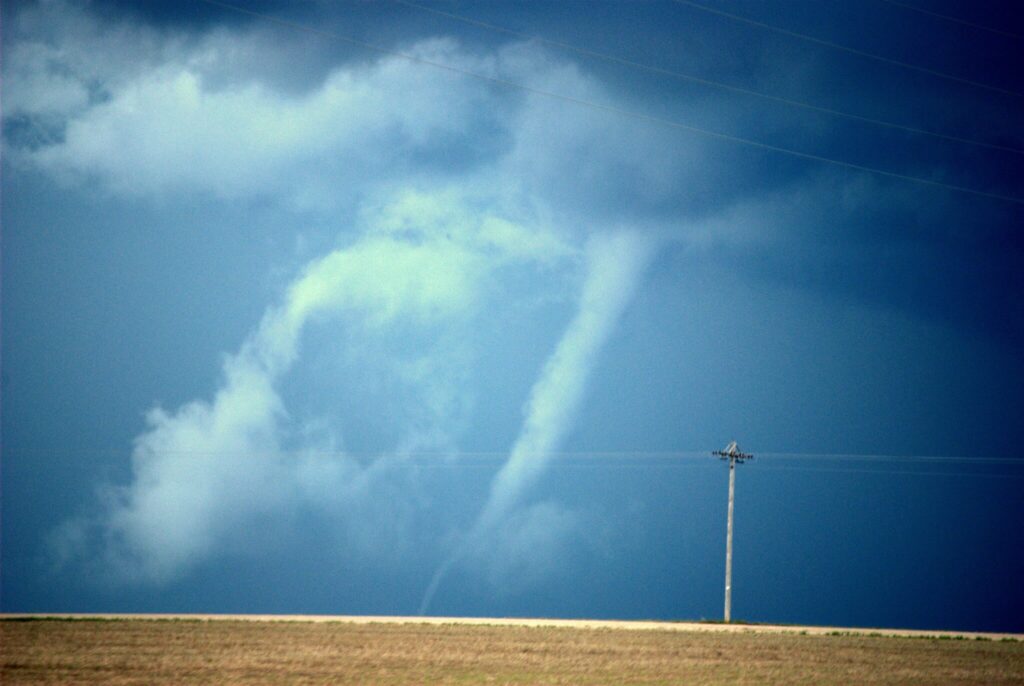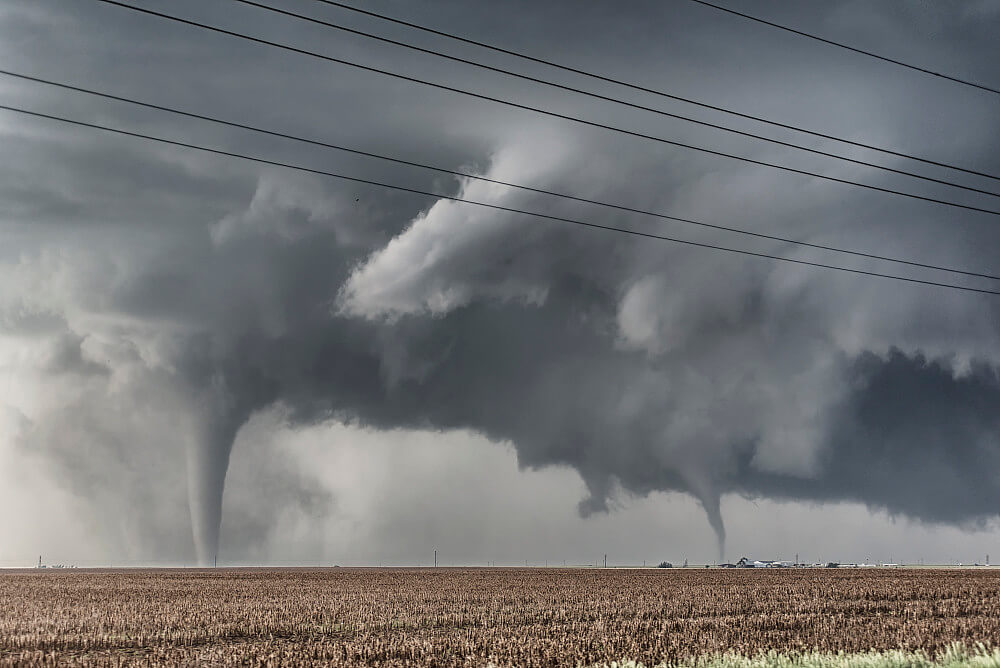With around 1200 tornadoes that happen annually in the United States alone, scientists are eager to learn more about their travel paths and their mysterious ways.
Tornadoes can form in a matter of seconds, and whilst many are small and disappear as quickly as they formed, some can rage for hours and cause millions of dollars worth of damage.
For this reason, it’s important that we as a nation learn all we can about tornadoes and how they move, what they avoid and how to protect ourselves against them.
Today, we’re going to learn more about the tornado’s travel path and answer a question that often comes up when discussing tornadoes. Do tornadoes follow water?
No, despite the many myths out there about this, tornadoes do not follow the water. The motion of the tornado’s parent thunderstorm determines the general speed and direction of a tornado.
Do Tornadoes Really Follow Water?
Tornadoes are formed through large thunderstorms that are located thousands of feet in the air.
Neither the thunderstorm nor tornado has any sense of “feeling”, and does not care whether it’s traveling across smooth surfaces or a river/lake.
The motion and speed of a tornado are influenced most by the parent thunderstorm that produced it.
Tornadoes do not actively follow or avoid water or any other type of surface, but it’s true that the ground-level strength of tornadoes’ wind speed will reduce when it encounters high-friction surfaces.
Can A Tornado Pick Up Water?
Tornadoes are land-based storms that, when strong enough are capable of picking up anything that they are traveling over, including water.
When a tornado travels over a river, lake, or body of water it will often pick up large amounts of water into the air with it.
The higher the water travels within a tornado the more dispersed the water becomes as it begins to mix with clouds and rain.
As the tornado travels and reaches the end of its life cycle, the water, among other debris and dirt that it has picked up will be dumped.
Can A Tornado Form On Water?
Yes, a tornado can certainly form on the water. Tornadic waterspouts are tornadoes that have formed over water or move from land onto the water.
Waterspouts have the same characteristics as a tornado in that they are rotating columns of air that can have wind speeds of up to 150mph.
This can overturn boats and cause a lot of destruction on the water, making waterspouts just as dangerous as land-based tornadoes.
The reason why they can be so dangerous is that there is no place to hide from a waterspout on open water, so it’s important to evacuate immediately.
Waterspouts are often accompanied by high wind speeds, severe thunderstorms, as well as large hail, and frequent lightning.
Fair-weather waterspouts are usually not associated with thunderstorms, but often develop along the dark flat base of a line of cumulus clouds.
By the team the funnel of a fair-weather waterspout is visible, it’s often at its peak maturity. They don’t stick around for too long.
If a waterspout moves onshore, the National Weather Service will issue a tornado warning, as some can cause significant damage to people and property.
Do Tornadoes Avoid Water?
Tornadoes do not actively avoid water, and in fact, they regularly cross rivers, lakes, and other bodies of water.
They can even form on the water, which is known as waterspouts. A tornado does not know what type of surface it is traveling over and therefore will travel over mountains, water, and flatlands.
Whilst many tornadoes that reach large bodies of water such as the ocean will ultimately start to lose power, they can still transition into waterspouts and cause destruction.
Many people assume that large lakes offer protection from tornadoes, but this really is not the case.
Whilst cold water and cool air on top of the lake can provide a locally stable environment, the chances are that a thunderstorm-producing tornado moving towards a cold lake has something much larger driving it than the cold water can inhibit.
Lake breezes that are found along many lakes are often shallow and only affect a small portion of the lower atmosphere.
Many tornadoes have formed around lakes, such as on August 8, 2011, when a weak tornado developed on Lake Montana in the city of Madison.
Final Thoughts
Do tornadoes follow water? No, they do not. Whilst tornadoes don’t actively follow the water, they also do not avoid it either.
Many tornadoes have formed around and even on large bodies of water, such as the example we have given above on Lake Montana.
Tornadoes are even capable of forming on water, which is known as tornadic waterspouts. Whilst these are often less powerful they can still be just as destructive as land-based tornadoes.
Many people believe that lakes and large bodies of water offer protection from tornadoes because of the breeze that is often found around those areas.
However, it’s important to note that tornado-generating thunderstorms are often incredibly powerful and will not be affected by the lake’s breeze.
Thanks for taking the time to read this post today and I hope you have learned something new about why tornadoes do not follow the water.
If you have enjoyed this article, feel free to stick around to learn more about tornados and the many other types of extreme weather events that we discuss here.

Hey, I’m Sam – the founder of GustyPlanet. I’ve had a fascination with all things weather for as long as I can remember. I witnessed my first tornado at the age of 6, and since then became an avid storm chaser that is hooked on learning as much as I can about extreme weather. This blog was created to share my knowledge and to expand and delve deeper into the wonderful world of weather phenomena. I hope you enjoy your stay here and thanks for visiting.








